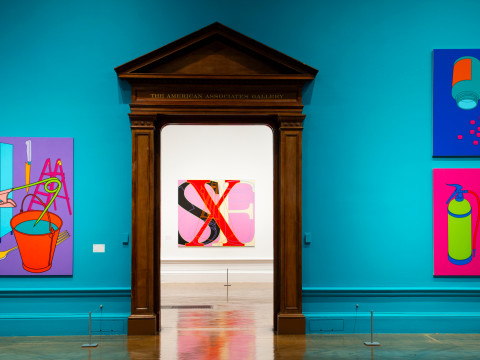
Who’s who in 'Mr. Turner'?
By Annette Wickham
Published on 27 October 2014
Mike Leigh’s new film brings to life one of British art’s brightest stars and features several scenes set at the RA. We take a look at the supporting cast of Turner’s friends and rivals at the Academy.
I’m really looking forward to seeing Mike Leigh’s new biopic Mr. Turner, especially as I was lucky enough to meet some of the cast when they visited the RA last year. The film’s dialogue was unscripted, so the actors were keen to find out as much as possible about their characters, to fully bring them to life. Some of them had to dig deep into the RA’s Collection, library and archive to uncover useful information and interesting scenarios from the lives of these artists.
Mr. Turner includes several scenes that take place at the Royal Academy during the 1830s and ‘40s, exploring the spirit of camaraderie and competition that existed between Turner and his fellow Academicians. Expect some fireworks on ‘Varnishing Days’, when the Academicians gathered to put the finishing touches to their work before the opening of the annual exhibition (now the Summer Exhibition). Turner loved these occasions and was well known for his competitive antics, rapidly completing unfinished paintings and effortlessly upstaging the work of his rivals.
Mr. Turner and the Summer Exhibition
Discover how the makers of 'Mr. Turner' recreated scenes at the Royal Academy's Summer Exhibition in this fascinating behind-the-scenes featurette.
While some of the Royal Academicians who feature in Mr. Turner are household names, others are now more obscure, despite the fame and success they enjoyed during their lifetimes. Here’s a quick guide to some of the Academicians who make an appearance in the film:
John Constable RA (1776 – 1837)
Constable and Turner, described as the ‘twin giants’ of British art, were close contemporaries and great rivals. However, Constable’s rise to fame was not as meteoric as Turner. Born in Suffolk, the son of a prosperous mill owner, he joined the Royal Academy Schools ten years after Turner in 1799. Constable was elected an Associate of the RA in 1819, but despite his achievements as a landscape painter he was not elected a full Royal Academician until 1829. He wrote to a friend at the time expressing his exasperation that this honour had been so ‘long delayed’. Pictured below is the ‘Diploma’ work that Constable presented to the Academy following his election.
The rivalry between Constable and Turner came to a head a few years later at the Academy Varnishing Day in 1832. Constable was busy in the gallery putting the finishing touches to The Opening of Waterloo Bridge, a picture that had taken him years to paint. When Turner came in and saw that his own calm seascape Helvoetsluys looked pale in comparison with the lively hues of Constable’s work, he painted an eye-catching red buoy right in the middle of his canvas. A crestfallen Constable complained that Turner had been in and ‘fired a gun’. You can see a clip of this scene, as recreated in the film, in the video featurette above.

Sir Charles Locke Eastlake PRA (1793 – 1865)
A successful painter and respected art historian, Charles Eastlake became President of the Royal Academy in 1850 and was appointed as the first Director of the National Gallery in 1855. Eastlake was particularly interested in the Renaissance period and his own paintings mostly depict historical or biblical subjects, as in his Academy ‘Diploma’ work, Hagar and Ishmael. Eastlake was also a talented landscape painter and became good friends with Turner. The two shared lodgings on a visit to Rome in 1828 and Eastlake defended his friend’s more experimental work against the criticism it received in the press.
George Jones RA (1786 – 1869)
George Jones studied at the RA Schools and exhibited at the annual exhibition from 1803 onwards. Most of his early paintings were portraits and literary subjects, but he became known as 'Waterloo Jones' after serving in the army during the Napoleonic Wars. He used his military experience to paint numerous depictions of the Battle of Waterloo and went on to specialise in battle scenes (like his ‘Diploma’ work, below).

Jones’s military demeanour was bolstered by the fact that he was a lookalike for the Duke of Wellington and was sometimes mistaken for him. He is even said to have dressed up in military gear to mimic the Duke, which provided a source of fun for the RA Schools students (where he taught). Jones was a good friend of Turner’s and one of the executors of his will. He also painted two small oil sketches of Turner’s gallery, which are the only known records of its appearance.
David Roberts RA (1796 – 1864)
David Roberts was one of the younger generation of Academicians who were friendly with Turner, although Roberts was initially in awe of the older artist, who he described as ‘the mighty painter of the day that all spoke of, and whose works were the all-in-all to every young artist’. Born in Edinburgh, Roberts began his career as a house-painter and later a scene painter. He later became the first independent British artist to travel and paint extensively in the Near East. His prints and paintings of ancient monuments and vast desert landscapes brought images of Egypt and the 'lands of the Bible' to an appreciative European audience. He became a Royal Academician in 1841 and his 'Diploma' work depicts the Great Temple at Baalbec in the Lebanon.
Sir John Soane RA (1753 – 1857)
The neo-Classical architect Sir John Soane was born in Oxfordshire, the son of a bricklayer. He joined the RA Schools in 1771 and, after winning a travelling scholarship in 1777, set off on a Grand Tour of Italy, returning to England in 1780. Soane was later appointed to design the Bank of England, among other prestigious commissions. Turner and Soane were both elected Royal Academicians in 1802 and by the end of the decade both were Academy Professors (Soane of Architecture and Turner of Perspective). In his lectures Soane praised 'the beauties and almost magical effects in the architectural drawings of a Clerisseau, a Gandy or a Turner'. The two shared a great interest in fishing as well as in art and architecture and were friends for over 40 years.
Clarkson Stanfield RA (1793 – 1867)
Clarkson Stanfield was one of the most popular marine painters of his day. He and Turner were friends, but rivals in this genre. Born in Sunderland, Stanfield had first-hand experience of life at sea having served in the Royal Navy for several years before becoming an artist. Back on dry land, he met David Roberts and the two worked together as scene painters as well as producing several dioramas and panoramas. The Victorian artist and writer G.D. Leslie recalled that Stanfield had, 'like Turner, much of the charm of the sailor in both face and manner; his hair was brown and very curly. All his brother members called him 'Stanny' and without doubt all loved him'. Stanfield was elected a Royal Academician in 1835 and this is his ‘Diploma’ work.
Other Academicians that feature in the film include Sir William Beechey, Sir Augustus Wall Callcott, Charles Robert Leslie, Henry Pickersgill, Sir Martin Archer Shee and Thomas Stothard. You can see works by all of them on the RA Collection website.
Mr. Turner, directed by Mike Leigh and starring Timothy Spall as Turner, opens in cinemas on 31 October. Our special panel discussion 'Behind the Scenes of Mr. Turner' has sold out, but we will be recording the event and a podcast will be available afterwards.
Annette Wickham is the RA's Curator of Works on Paper.
Related articles
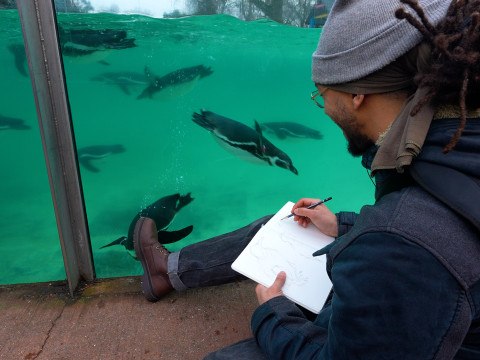
Video: drawing penguins at London Zoo
3 February 2025
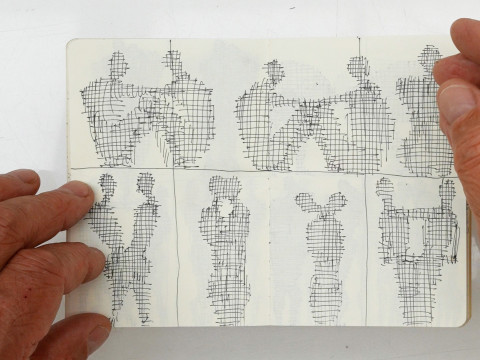
My sketchbook: sculpture drawings by Antony Gormley RA
13 January 2025
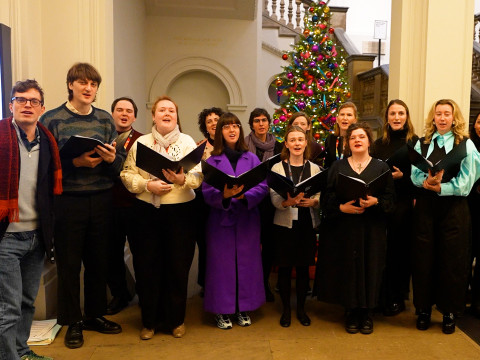
Video: Merry Christmas from the Burlington House choir
18 December 2024
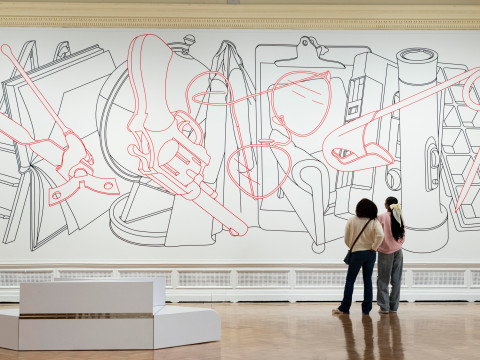
Video: drawing on gallery walls with tape
15 October 2024
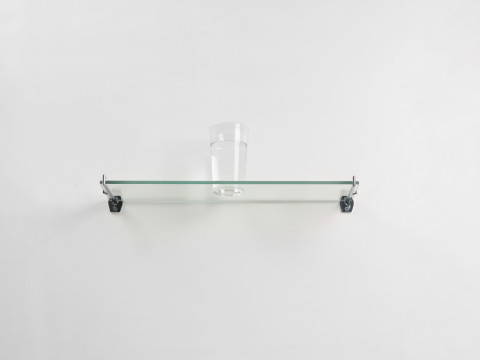
Video: changing a glass of water into an oak tree
15 October 2024
